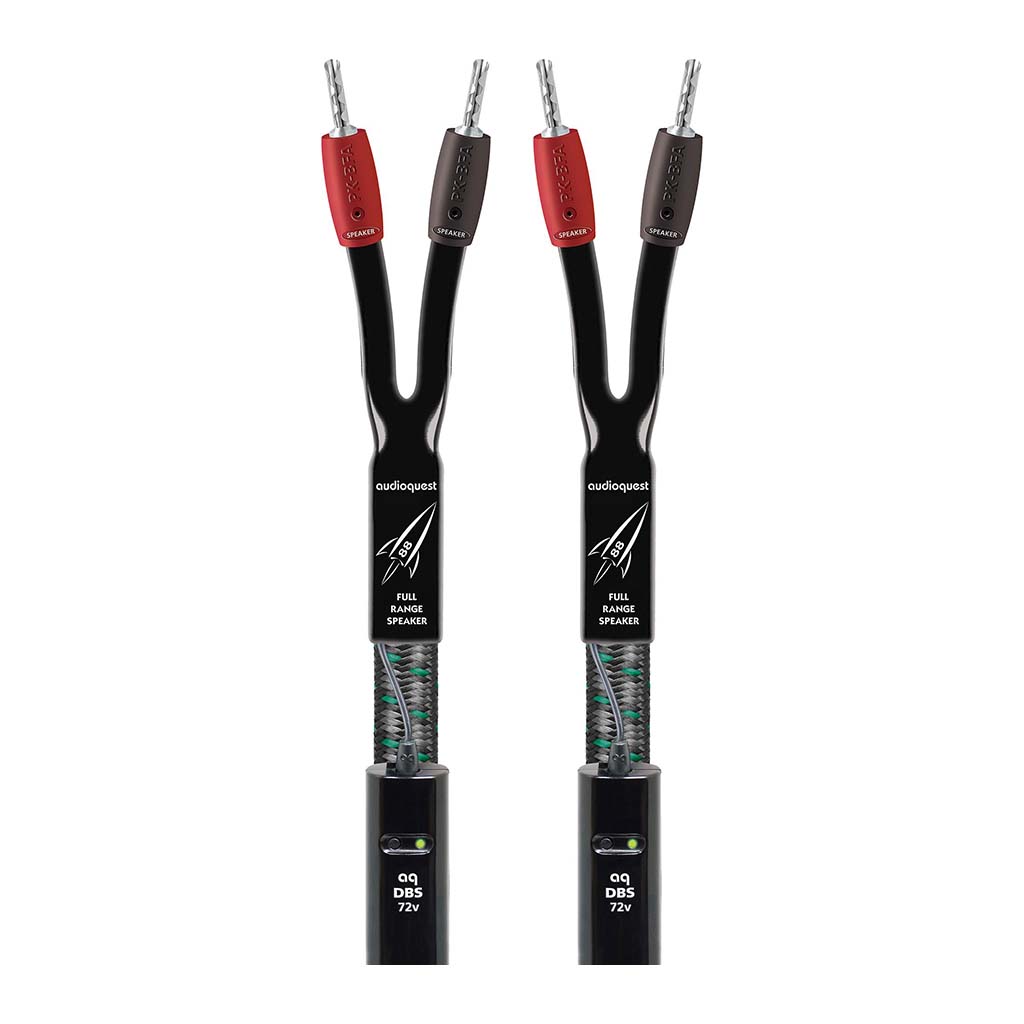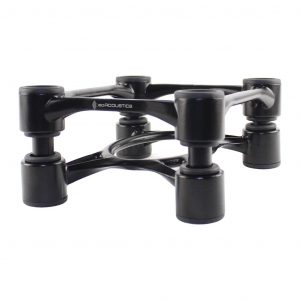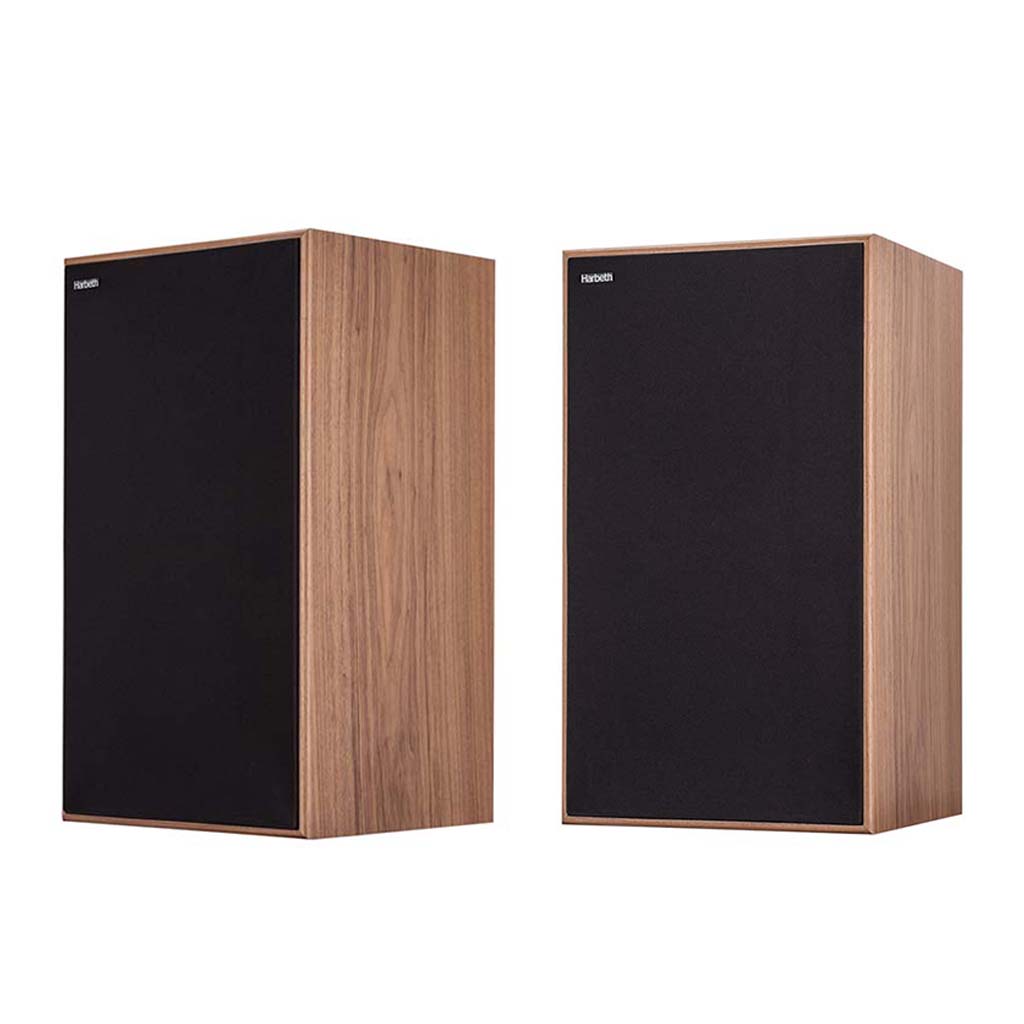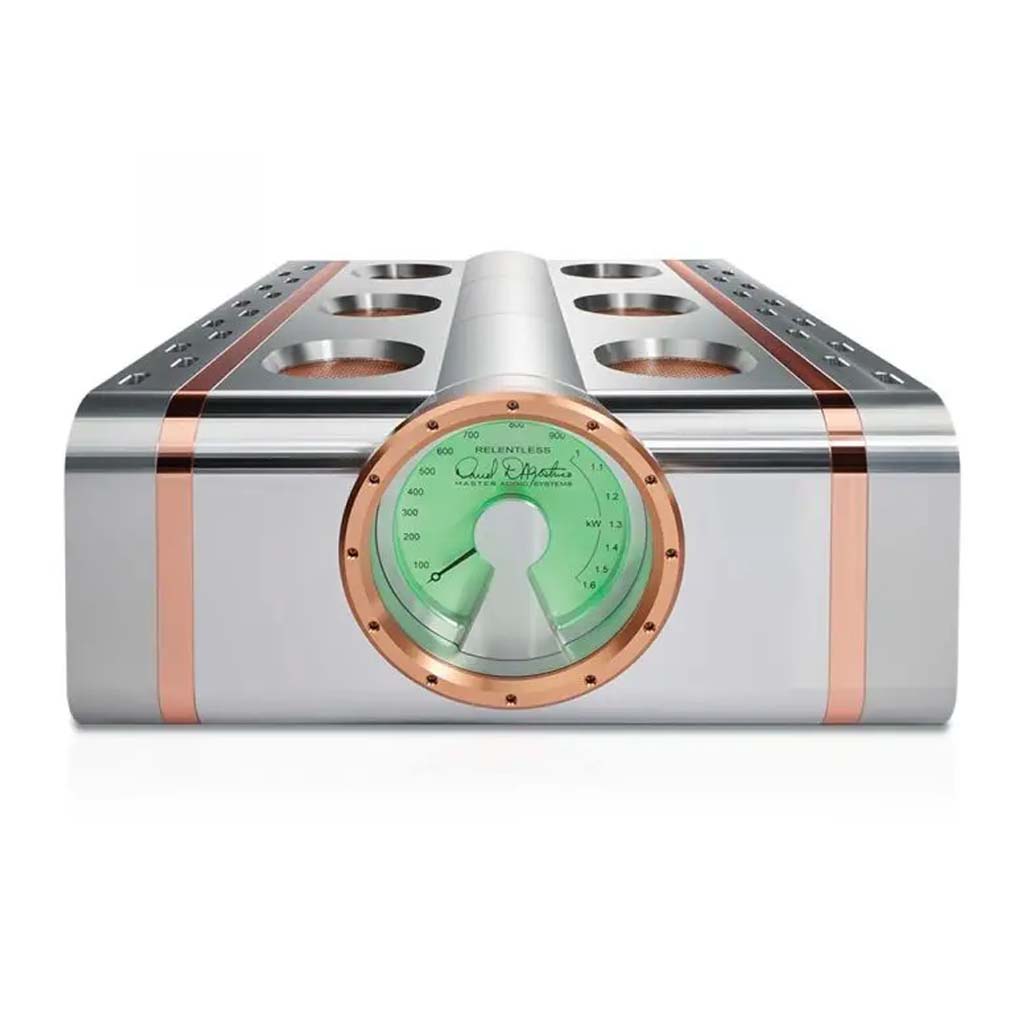AED 5,590.00 – AED 7,149.00 (Inc. Tax)
5323.809524-6808.571429Learn more

Rocket 88 speaker cable incorporates AudioQuest's patented Dielectric-Bias System (DBS) and replaces Long-Grain Copper with solid Perfect-Surface Copper+. DBS offers a lower noise floor, so you can hear deeper into the nuances of your favorite music. At the same time, the addition of more PSC+ offers a smoother, more relaxed, and natural sonic timbre and texture.
Overview
Rocket 88 Speaker Cable incorporates AudioQuest’s patented Dielectric-Bias System (DBS) and replaces Long-Grain Copper with solid Perfect-Surface Copper+. DBS offers a lower noise floor, so you can hear deeper into the nuances of your favorite music. At the same time, the addition of more PSC+ offers a smoother, more relaxed, and natural sonic timbre and texture.
SOLID PERFECT-SURFACE COPPER+ (PSC+) CONDUCTORS
Solid conductors prevent electrical and magnetic strand interaction. PSC+ Solid-Copper minimizes distortion caused by grain boundaries and maximizes linear RF Noise-Dissipation.
DOUBLE STAR-QUAD GEOMETRY
The relationship between conductors defines a cable’s most basic electrical values (capacitance and inductance). However, even when those variables are kept in reasonably neutral balance, the particular geometric relationship between conductors greatly affects the sound. Star-
Quad geometry is not only vastly superior to conductors run in parallel, but also to the same conductors as two twisted pairs.
DIELECTRIC-BIAS SYSTEM WITH RADIO FREQUENCY TRAP
All insulation between two or more conductors is also a dielectric whose properties will affect the integrity of the signal. When the dielectric is unbiased, dielectric-involvement (absorption and non-linear release of energy) causes different amounts of time delay (phase shift) for different frequencies and energy levels, which is a real problem for very time-sensitive multi-octave audio. The inclusion of an RF Trap (developed for AudioQuest’s Niagara Series of power products), ensures that radio-frequency noise will not be inducted into the signal conductors from the DBS field elements. (DBS, US Pat #s 7,126,055 & 7,872,195 B1)
CARBON-BASED NOISE- AND CROSSTALK-DISSIPATION SYSTEM
This cable’s negative conductors are covered with partially conductive Carbon-Loaded Polyethylene. This remarkable material reduces radio-frequency garbage being fed back into the amplifier. The sonic benefit is exactly the same reduction in “hash” and improved dimensionality that comes whenever RF interference is reduced in an audio circuit. In addition, a carbon layer damps interaction between positive and negative conductors, and an external Carbon-Based Noise-Dissipation System reduces external interference.
FOAMED-POLYETHYLENE INSULATION (FOR ALL POSITIVE CONDUCTORS)
Any solid material adjacent to a conductor is actually part of an imperfect circuit. Wire insulation and circuit board materials all absorb energy. Some of this energy is stored and then released as distortion. This cable, however, uses air-filled Foamed-Polyethylene Insulation on both conductors. Because air absorbs next to no energy and Polyethylene is low-loss and has a benign distortion profile, Foamed-PE, with its high air content, causes much less of the out-of-focus effect common to other materials.
Solid conductors prevent electrical and magnetic strand-interaction. PSC+ Solid-Copper minimizes distortion caused by grain boundaries and maximizes linear RF Noise-Dissipation.
DOUBLE STAR-QUAD GEOMETRY
The relationship between conductors defines a cable's most basic electrical values (capacitance and inductance). However, even when those variables are kept in reasonably neutral balance, the particular geometric relationship between conductors greatly affects the sound. Star-
Quad geometry is not only vastly superior to conductors run in parallel, but also to the same conductors as two twisted pairs.
DIELECTRIC-BIAS SYSTEM WITH RADIO FREQUENCY TRAP
All insulation between two or more conductors is also a dielectric whose properties will affect the integrity of the signal. When the dielectric is unbiased, dielectric-involvement (absorption and non-linear release of energy) causes different amounts of time delay (phase shift) for different frequencies and energy levels, which is a real problem for very time-sensitive multi-octave audio. The inclusion of an RF Trap (developed for AudioQuest’s Niagara Series of power products), ensures that radio-frequency noise will not be induced into the signal conductors from the DBS field elements. (DBS, US Pat #s 7,126,055 & 7,872,195 B1)
CARBON-BASED NOISE- AND CROSSTALK-DISSIPATION SYSTEM
This cable's negative conductors are covered with partially conductive Carbon-Loaded Polyethylene. This remarkable material reduces radio-frequency garbage being fed back into the amplifier. The sonic benefit is exactly the same reduction in "hash" and improved dimensionality that comes whenever RF interference is reduced in an audio circuit. In addition, a carbon layer damps interaction between positive and negative conductors, and an external Carbon-Based Noise-Dissipation System reduces external interference.
FOAMED-POLYETHYLENE INSULATION (FOR ALL POSITIVE CONDUCTORS)
Any solid material adjacent to a conductor is actually part of an imperfect circuit. Wire insulation and circuit board materials all absorb energy. Some of this energy is stored and then released as distortion. This cable, however, uses air-filled Foamed-Polyethylene Insulation on both conductors. Because air absorbs next to no energy and Polyethylene is low-loss and has a benign distortion profile, Foamed-PE, with its high air content, causes much less of the out-of-focus effect common to other materials.
Gauge: 3.31mm2
Geometry: Double Star-Quad
Dielectric: Foamed-Polyethylene (For All Positive Conductors)
Noise-Dissipation System: Cross-Talk-Dissipation System
72V Dielectric-Bias System (DBS) saturates and polarizes insulation, greatly reducing digital-audio distortion
Jacket: Black/Green Braid
Plugs: 500 Series Multi-Spade or Banana (Gold or Silver)
Outer Diameter: 15mm x 7mm (Braided Cable)
- Factory Terminated
Orders ship Sunday through Friday from our offices in Dubai, UAE.
In-stock products typically ship within 48 hours and should be expected to arrive in 3-4 business days. Orders outside of the UAE should be expected to arrive in 5-7 business days.
Pre-order and backorder products will state the approximate delivery timeline beside the Add To Cart button.
If you would like to place a custom order, chat with our specialists for a guided shopping experience. Once your order has been placed, a timeline will be provided depending on your order details.
- Free delivery within the UAE
- Shipping charges will be calculated upon checkout for orders outside of the UAE (Bahrain, Oman, Kuwait, Saudi Arabia & Qatar).
- Taxes and duties are calculated according to the applicable laws of the state or country an item is shipped to and are the customer's responsibility.
For additional information on shipping and our exchange & return policy visit our help center.
Installation charges are applicable and can be paid upon delivery for our clients based in Dubai.
- Installation Charges: AED 450 Per Hour
- Speaker Cables: AED 32 Per Meter
- Trunking: AED 10 Per Meter
For clients based outside of the UAE, please contact our specialists and we will share an estimate based on your requirements.
The relationship between conductors defines a cable's most basic electrical values (capacitance and inductance). However, even when those variables are kept in reasonably neutral balance, the particular geometric relationship between conductors greatly affects the sound. Star-Quad geometry is not only vastly superior to conductors run in parallel, but also to the same conductors as two twisted pairs.
Any solid material adjacent to a conductor is actually part of an imperfect circuit. Wire insulation and circuit board materials all absorb energy. Some of this energy is stored and then released as distortion. This cable, however, uses air-filled Foamed-Polyethylene Insulation on both conductors. Because air absorbs next to no energy and Polyethylene is low-loss and has a benign distortion profile, Foamed-PE, with its high air content, causes much less of the out-of-focus effect common to other materials.
The Bulletin


To those new to the AudioQuest wo...
Learn More


One of the original masters of So...
Learn More

 AE
AE SA
SA  OM
OM KW
KW BH
BH QA
QA






















